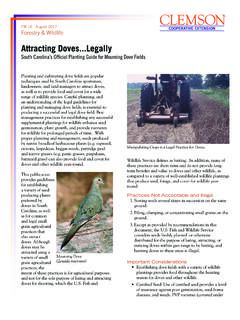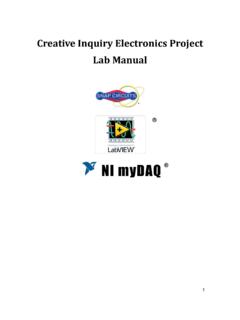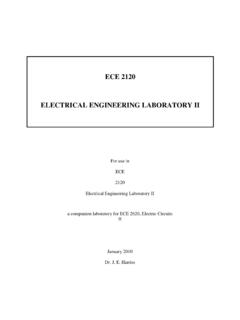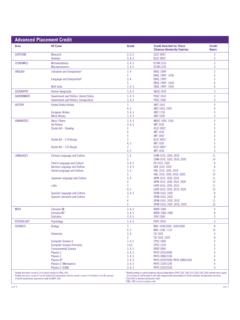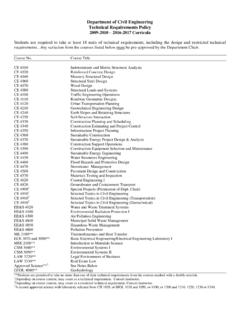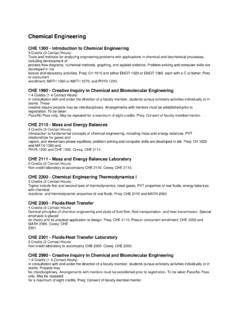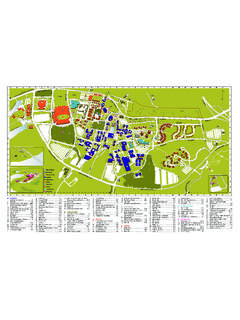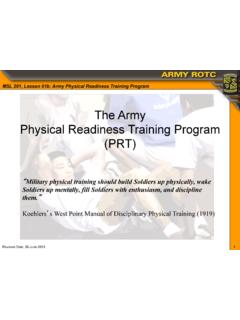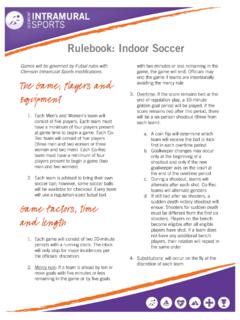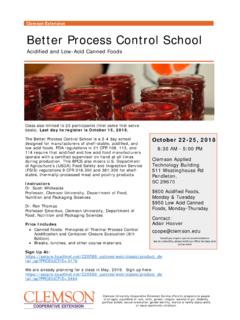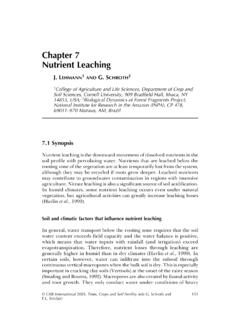Transcription of Poultry Manure Production and Nutrient Content
1 3-b-1 CHAPTER 3b Poultry Manure Production and Nutrient Content John P. Chastain, James J. Camberato, and Peter Skewes Knowledge of the amount of Manure and plant nutrients produced on a Poultry farm is the first step in the proper operation of a Manure handling and utilization system. The Nutrient Content of Poultry Manure will vary with the digestibility of the ration, animal age, amount of feed wasted, the amount of water wasted, the amount of bedding used, and the number of times the Poultry house is cleaned in a year. The data provided in this chapter is to be used for general planning purposes.
2 South Carolina regulations (Standards for the Permitting of Agricultural Animal Facilities: ) require Poultry producers to have Manure samples analyzed annually and to determine Manure volumes to establish land application rates. Nutrient Content OF Poultry Manure Poultry Manure contains all 13 of the essential plant nutrients that are used by plants . These include nitrogen (N), phosphorous (P), potassium (K), calcium (Ca), magnesium (Mg), sulfur (S), manganese (Mn), copper (Cu), zinc (Zn), chlorine (Cl), boron (B), iron (Fe), and molybdenum (Mo).
3 Plant nutrients originate from the feed, supplements, medications, and water consumed by the animals. Using Poultry Manure as a fertilizer for crops or trees may provide a portion, or all, of the plant requirements. The amount of nutrients provided depends on the Nutrient Content of the Manure (lb of Nutrient / ton of Manure ) and the amount of Manure applied (ton of Manure / acre). The amount of Manure applied per acre (called the application rate) is typically based on the nitrogen needs of the plants . However, phosphorous requirement can also be used to determine the application rate (for more details see Chapter 5, Waste Utilization).
4 South Carolina regulations can also limit the land application rate of Poultry Manure based on the copper, zinc, or arsenic Content of the Manure . The Nutrient Content of Poultry Manure from several types of Poultry facilities is compared in Tables and The Nutrient values in these tables (Table ) can be used for general planning before a new Poultry farm is constructed, or prior to the expansion of an existing farm. In the case of an existing Poultry farm, sample analysis from the Poultry Manure on a particular farm must be used to perform Nutrient balances for land application.
5 These values were compiled from a database that combines data taken on South Carolina Poultry farms with mean values from North Carolina State (Barker, 1990), and information provided in the Poultry Waste Management Handbook (NRAES, 1999). 3-b-2 Table Broiler and turkey Manure Nutrient Content as removed from the Production house (lb/ton). Nutrient data complied from Barker, (1990), NRAES-132 (1999), and data compiled from South Carolina farms. CHICKEN TURKEY Broiler Broiler Roaster Breeder Grower Grower Poult Breeder Litter Cake 1 Litter Litter Litter Cake 1 Litter Litter Moisture (%) TS (%)
6 Density (lb/cu. ft.) 2 27 34 3 27 35 30 35 3 26 27 Nutrient Content (lb/ton) NH4-N 11 12 14 8 12 20 10 8 Organic-N 60 34 57 26 42 25 30 27 Nitrate-N
7 NR4 NR NR NR NR NR Total-N 72 46 71 34 54 45 40 35 PAN Surface Spread 42 26 41 20 31 25 23 20 Incorporated 45 30 45 22 35 31 26 23 P2O5 69 53 72 56 64 47 43 47 K2O 46 36 46 33 39 30 27 18 Ca 44 34 42 89 37 26 26 72 Mg
8 S 14 Zn Cu Mn Na 10 10 13 As NR NR NR NR NR NR 1 Surface Manure cake removed between flocks and prior to adding additional bedding (NRAES, 1999).
9 2 Litter Density (lb/cu. ft.) = - TS (%), r 2 = (does not include caked litter). 3 Density value from NRAES (1999) 4 NR = Not Reported QUANTITY OF Manure PRODUCED FROM Poultry HOUSES The quantity of litter or Manure can vary greatly from farm-to-farm. Estimates of the amount of layer Manure produced per animal unit per year are given in Table The moisture Content and the litter depth at the time the house is cleaned out are the primary factors that affect the amount of litter produced in broiler and turkey houses. The numbers of flocks that are grown on the litter also affect the total quantity that must be handled.
10 However, a litter depth and moisture Content measurement prior to clean-out will include the effects of multiple flocks. Table can be used to estimate the tons of Manure per 1,000 square feet (ft2) of floor area. The moisture Content can be obtained from a Manure analysis report. 3-b-3 Table Layer Manure characteristics and quantity as removed from the house (NRAES, 1999 and Barker, 1990). High-Rise, Deep-pit Stored on Unpaved Surface Under Cage Scraped Paved Alley, Removed Every 2 Days Moisture (%) 65 Density (lb/cu. Ft.) 62 Manure Production (ton Manure /AU-yr) Nutrient Content (lb/ton)
